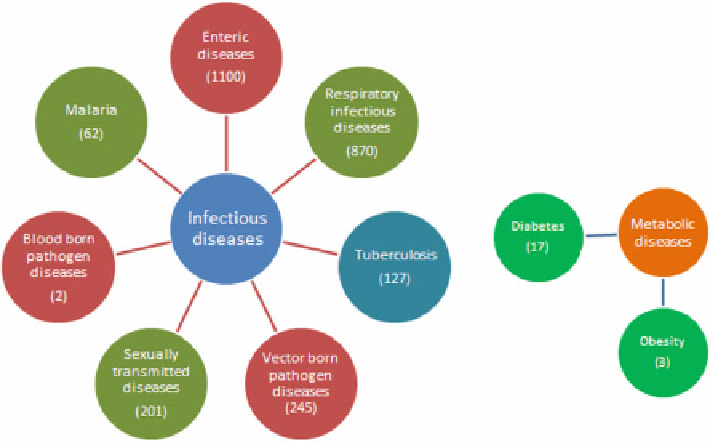Environmental Engineering Reference
In-Depth Information
Fig. 6.4 Infectious and non-infectious diseases and number of cell lines available according
to ATCC
EGFP (reporter gene), and NF-
κ
B (inflammatory growth factors), cytokines, and
adhesion molecules.
Phagocytic activity, internalization, and organelle interaction of nanoparticles of
particles larger than 500 nm is mainly triggered by protein-particle adsorption and
subsequent receptor-mediated activation of F-actin-driven pseudopods. A number
of cell-particle uptake assay kits are available in market, however it is advisable to
combine them together with microscopy techniques. Optical techniques mainly
include TEM, high-resolution (HRTEM) and energy-filtering (EFTEM) TEM,
Energy Loss Spectroscopy (EELS) and confocal Laser Scanning Microscopy and
fluorescence microscopy. Advance LSM can capture pseudo-3D images by the use
of reconstruction algorithms combining several axial and lateral images
[
15
]. Another technique called multiple particle tracking (MPT) assays can help
to understand particle interactions with various cell components in real-time using
video-interfaced phase microscopy by real-time information on pore sizes, particle
adhesion, intracellular particle transport mechanism, and barriers to particle trans-
port or localization. Additionally, two-point micro-rheology, a variation of MPT,
allows visualization of cell-particle interactions which is not accessible by any
other technique.
Other mammalian cell-based assays include use of single-celled ciliated pro-
tozoa and tetrahymena thermophila. In short, high-throughput screening methods
using multiple concentrations and multiple cells model ensures accuracy of results.
The ultra-small 384-well cell culture plates or nanodrop sample assay allows
multiple
assays with suitable detection features
(e.g. fluorescence
and

